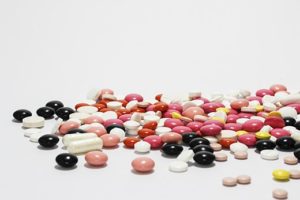
Translating a discovery in biology to a marketable medical breakthrough is a long drawn, tedious, high-investment, and high-risk process. Drug repurposing / repositioning has turned into a popular strategy of late. Not quite the same as traditional drug development techniques, the strategy is productive, affordable and is associated with reduced risk compared to novel molecular entities.
What is it, really?
According to NCATS of the US NIH, drug repurposing generally refers to studying a drug (already approved to treat one disease or condition) to see if they are safe and effective for treating other diseases. Wikipedia suggests that drug repositioning (AKA drug repurposing) involves the investigation of existing drugs for new therapeutic purposes.
The Process
Drug repurposing process starts with the collection of raw data on disease-drug-targets {1} followed by establishment of drug-target-disease relationship. {2} With an extensive support of potential evidence {3} and in silico–screening techniques {4} proof of concept is generated {5} which is then experimentally proved. (6} Further the shortlisted compounds pass through clinical trials {7} for the new indication and enter the market with FDA labelling {8 and 9}1

Where is the money?
The global market for drug repurposing reached nearly $24.4B in 2015 and could reach $31.3B in 2020, reflecting a five-year CAGR of 5.1%. The US accounted for $13.7 billion in 2015 and is forecasted to reach nearly $17.9 billion by 2020. The non-U.S. market is expected to increase to nearly $13.4 billion by 2020 from $ 10.6 billion in 2015, with a CAGR of 4.7%.2
What is driving the Market?
Ageing, increased prevalence of chronic diseases, rising healthcare costs and technological advancements (e.g. bioinformatics, chemo-informatics, network biology, system biology etc.) are driving the drug repurposing market3. Over the past 5 years, pressure on the industry caused by the ‘innovation gap’ of rising development costs and stagnant product output have become major reasons for the growing interest in drug repurposing. Due to Pharmaceutical R&D’s high failure rate, there is an acute need to increase the pipeline of “de-risked” assets and at the same time, there is an available pool of compounds that have been abandoned for strategic reasons (in other indications)6.
Where is the Research?
Given the high risk and expense associated with Pharmaceutical R&D and high unmet medical needs especially in rare diseases that suffer from inadequate financial support, drug repositioning offers opportunistic value to Pharma companies. Several organizations like NCATS, MRC-AstraZeneca, WHO etc. are sponsoring conceptual proposals on drug repurposing for unanswered issues in existing medical ailments and therapy failures1
A Select Set of Examples of Clinical Trials of Repurposed Drugs
| Drug | FDA approved indication | Repurposed Indication | Clinical Trials | |
| Rosiglitazone | Anti-diabetic | Malaria as an adjunct therapy | Initial Phases (NCT02694874) | |
| Fosidomycin & Clindamycin | Broad spectrum antibiotic | Malaria in children | Completed Phase 2 (NCT01464138) | |
| Paracetamol | Analgesic, Anti-pyretic | AKI in Plasmodium knowlesi Malaria | Phase 3 (NCT03056391) | |
| Tinidazole | Trichomoniasis | Radial cure of Plasmodium vivax | Completed Phase 2 (NCT00811096) | |
| Oxycodone | Diarrhea, severe pain | Pain management in cancer | Completed Phase-3 (NCT01675622) | |
| Enzalutamide | Prostate cancer | Advanced Breast Cancer | Phase 2 (NCT02953860) | |
| Cetuximab + Bevacizumab | Colorectal cancer | Head and Neck cancer | Completed Phase 2 (NCT00703976) | |
| Itraconazole | Anti-fungal | Prostate cancer | Completed Phase 2 (NCT00887458) | |
| Nelfinavir | Anti-viral | Kaposi Sarcoma | Phase 2 (NCT03077451) | |
| Digoxin | Congestive Heart Failure (CHF) | Prostate cancer | Completed Phase 2 (NCT01162135) | |
| Aspirin | Pain | Colon Cancer | Phase 3 | |
| For the complete list please refer to Biomedicine & Pharmacotherapy 110 (2019) 700-716 | ||||
In Conclusion
Globally, there are numerous diseases without suitable therapeutic options. Rapidly advancing understanding of human biology, increasing pool of actively studied moieties and the need to produce cost effective therapies, are driving the need to study the existing set of molecules for relevance across multiple diseases. The promise of cost effectively realizing the full potential of existing drugs vis-à-vis new therapeutic purposes is too attractive for all stakeholders in the healthcare value chain – patients, providers, pharma and payers, to pass.

